Connecting the Dots
During this leg of the expedition, we have been moving through a number of sampling stations in the Ross Sea, kind of like the switchbacks of a ride line-up at an amusement park (or more like a giant version of the entrance to Duloc in Shrek since there’s no one else here). As we travel between stations at a speed of 8 knots, we use a multi-beam echo sounder to identify and map zooplankton communities and conduct a hydrographic survey. At that speed, the stations for this sampling area are about five to nine hours apart. Occasionally, we slow down to deploy an xCTD (expendable CTD), which is a one-time CTD sampling device that can be launched from a slow-moving ship to sample the water column. Once we arrive at a station, we carry out a sequence of sampling techniques, slightly different at each station depending on the physical characteristics of the area and the studies involved. Sampling at each station takes between two and six hours, depending on the depth of the water column and which sampling methods are being used. Here are some examples of what we do at a typical sampling station.
Physical and Chemical Oceanography
The first thing we do at each station is to cast the CTD and rosette to measure the properties of the water column and take water samples for processing. Each scientist on board has a particular topic that they are studying, such as organic and inorganic carbon, dissolved gasses, nutrients, and oxygen isotopes. Depending on the depth of the cast, it can take anywhere from 30 minutes to 2 hours. When the CTD rosette comes up, there is a buzz of activity as each team collects the water they need to process for their research and heads off to their labs to prepare the samples for analysis or transport. Sometimes we do a CTD cast with a different rosette that is specially designed for studying trace metals like iron, which is a limiting factor for phytoplankton growth. Water samples for these studies can easily be contaminated, so they must be processed in a specially-prepared clean room, which is housed in a storage container on the deck. Occasionally, we’ll do another shallower cast with the main CTD rosette to collect more water samples at different depths.
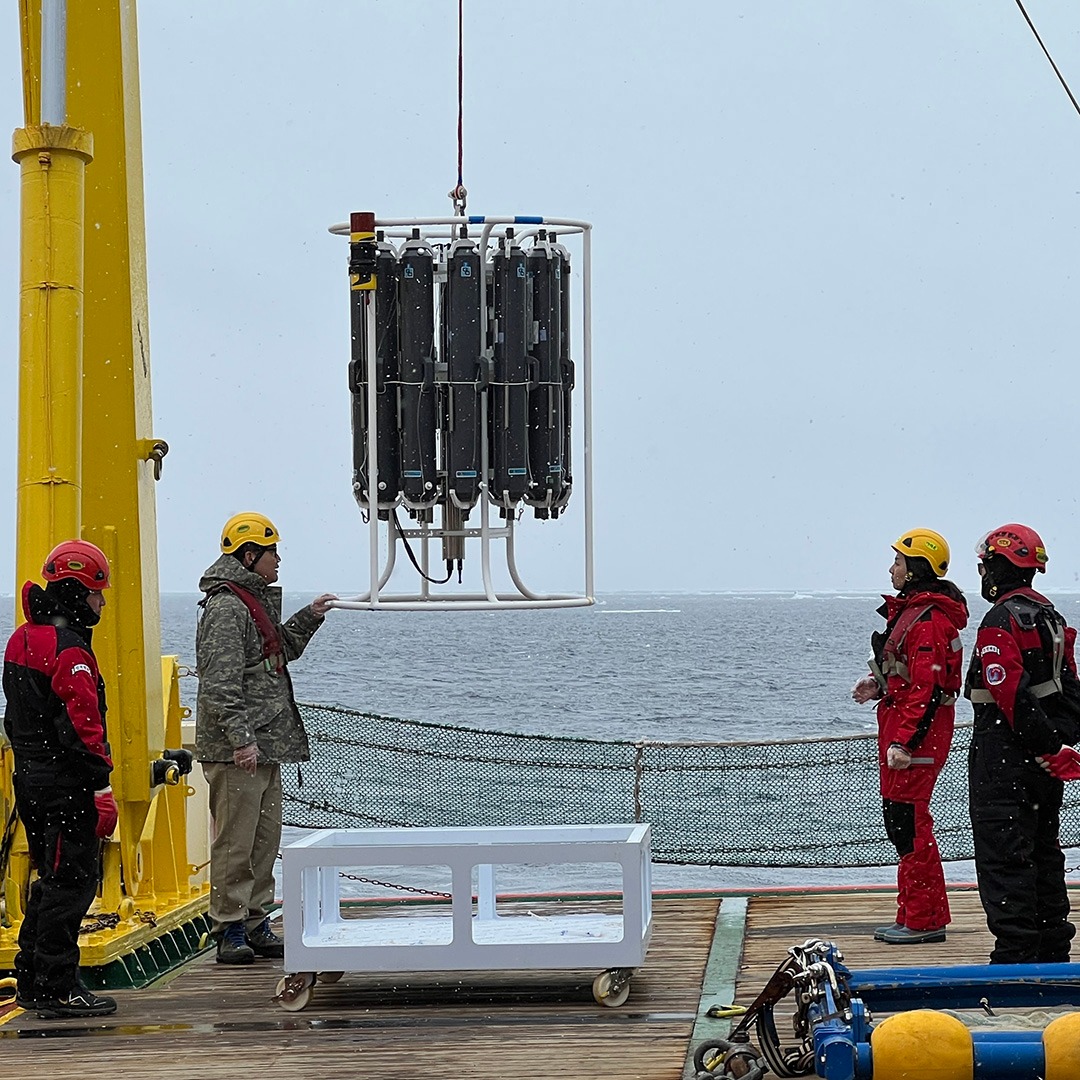
Bringing the trace CTD rosette onboard. photo by Jenn Magnusson.
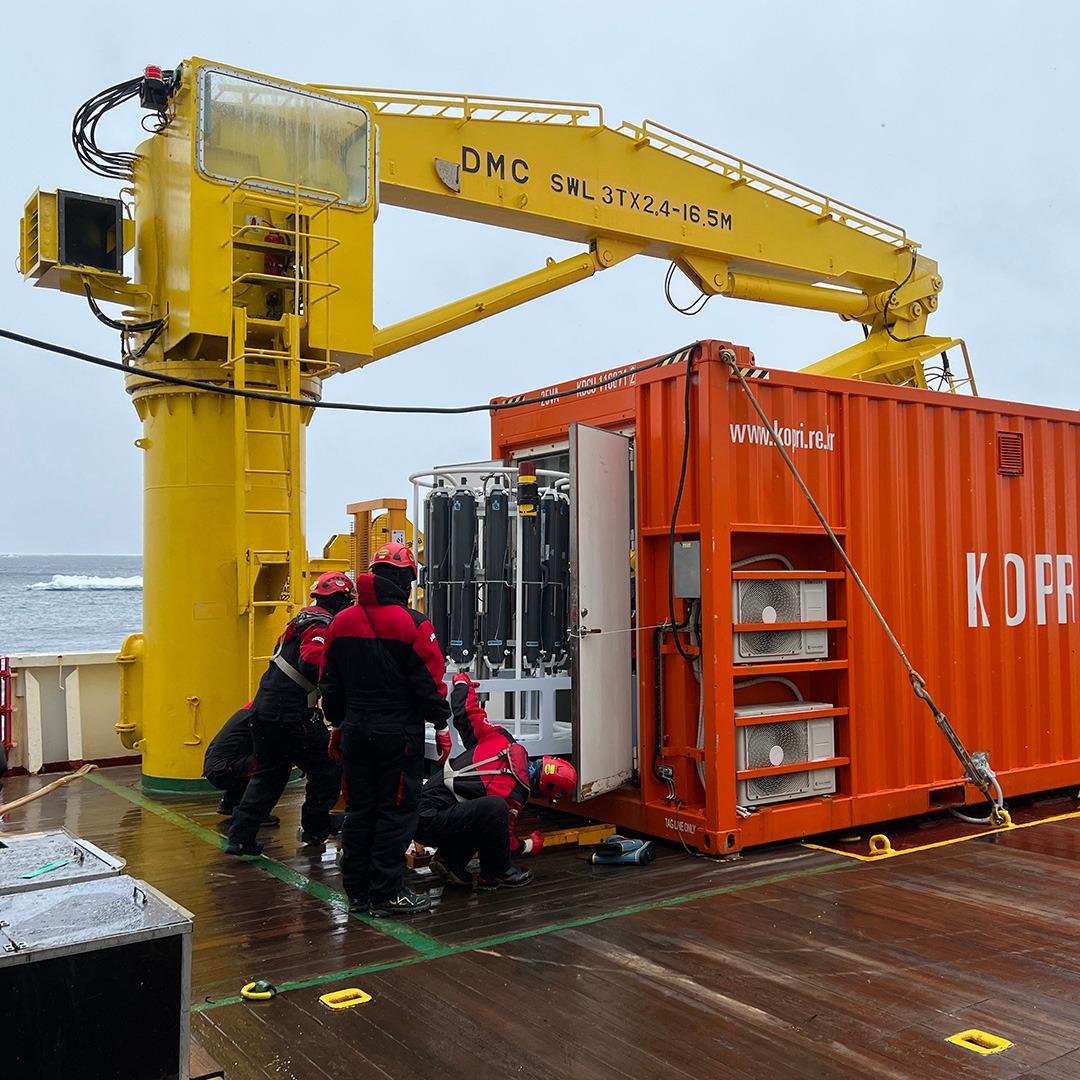
Loading the trace CTD rosette into the clean room for processing. Photo by Jenn Magnusson.
Biological Oceanography
After the CTD rosette sampling is done, we use a variety of nets to collect samples for the scientists who are studying the phytoplankton community, microzooplankton grazing, and mesozooplankton ecology. The main net used onboard is a bongo net, which consists of two circular nets attached side by side, like a bongo drum. We have been collecting samples with several different mesh sizes from 20 to 500 𝜇m to target specific sections of the plankton community, from the tiniest phytoplankton to larger zooplankton. The nets are lowered to the desired depth and then hauled back up through the water column, providing a vertical sample of the biological community. Samples are then observed, sorted, and prepared for analysis or transport.
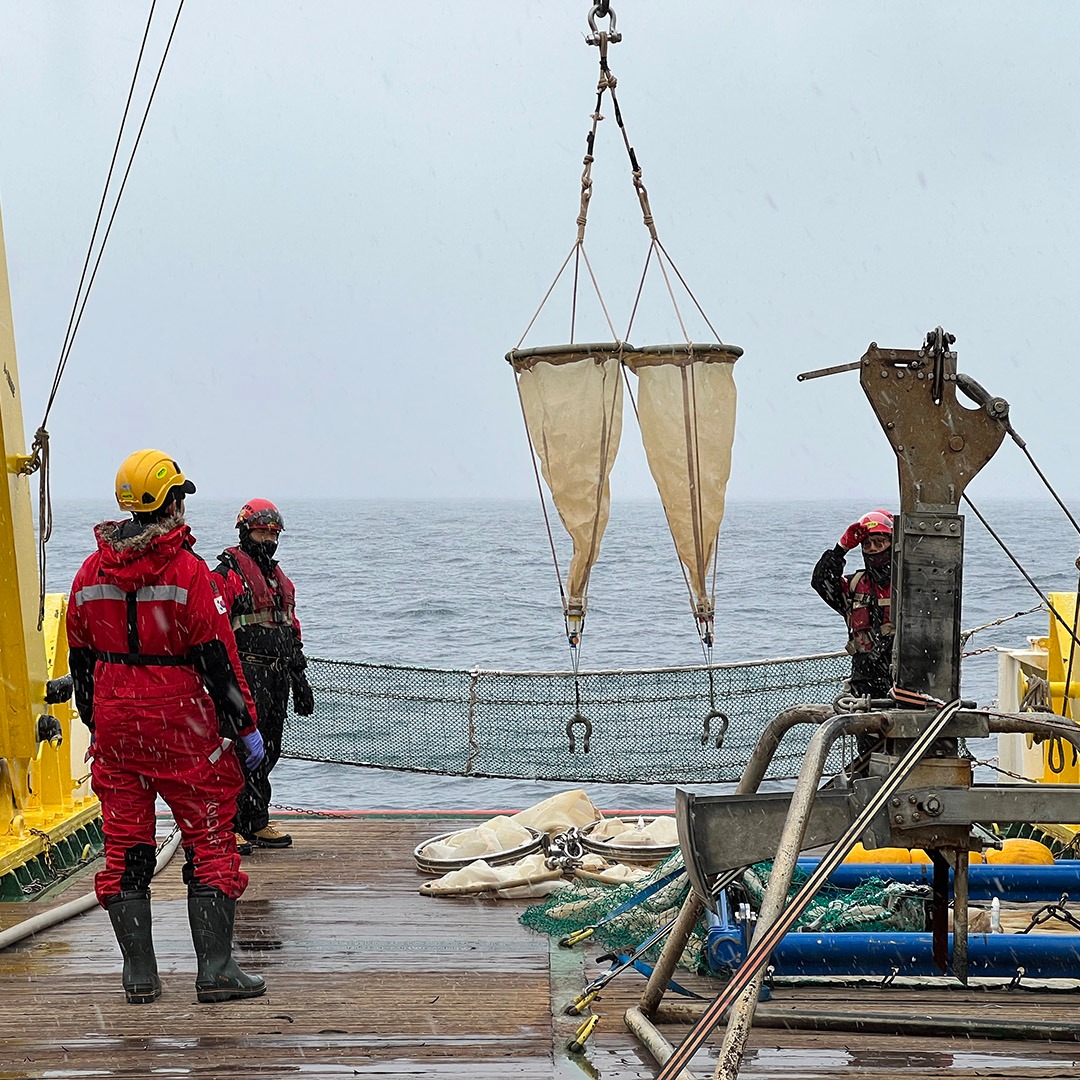
The phytoplankton net has a mesh size of just 20 𝜇m. Photo by Jenn Magnusson
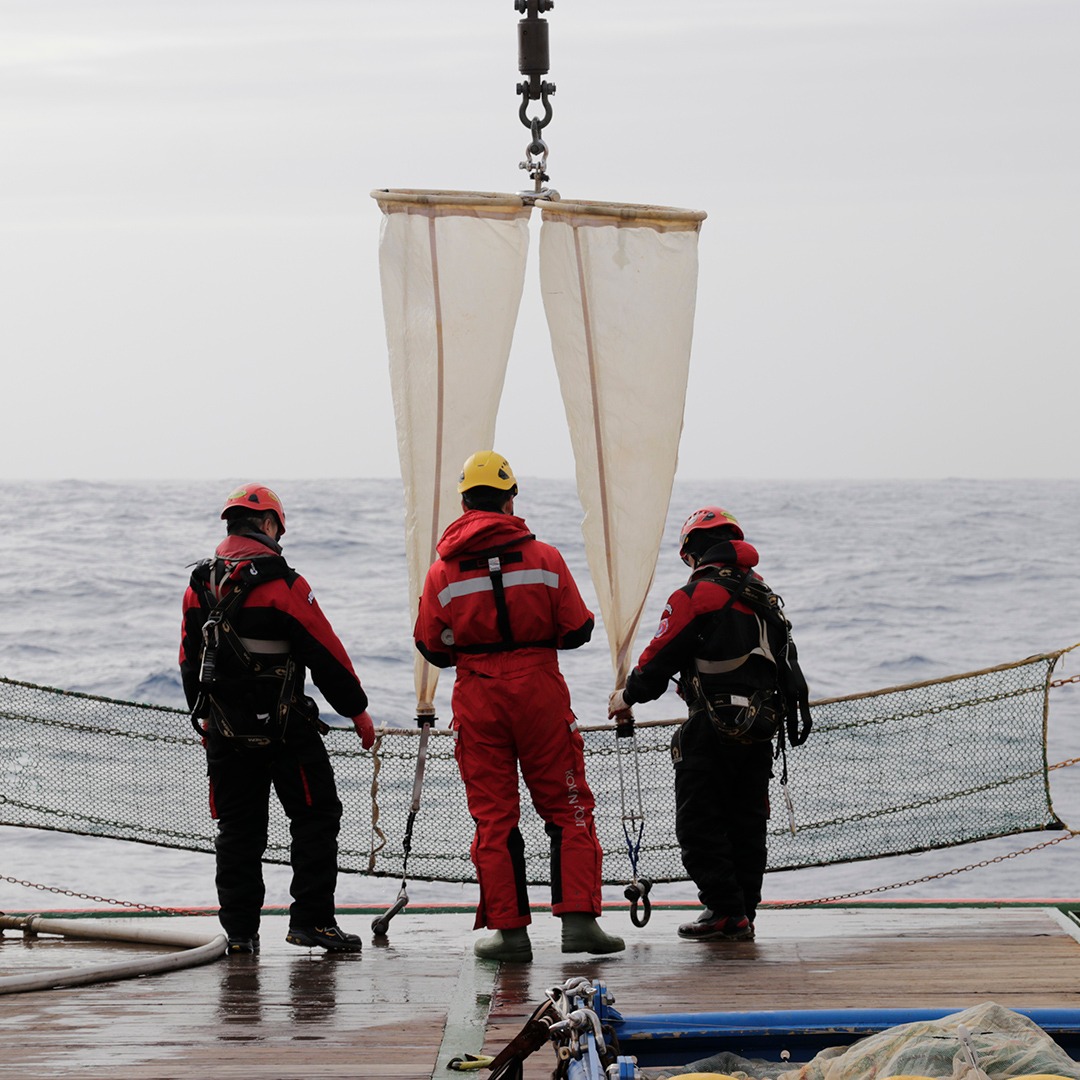
The medium bongo net has a mesh size of 150 𝜇m. Photo by Jenn Magnusson
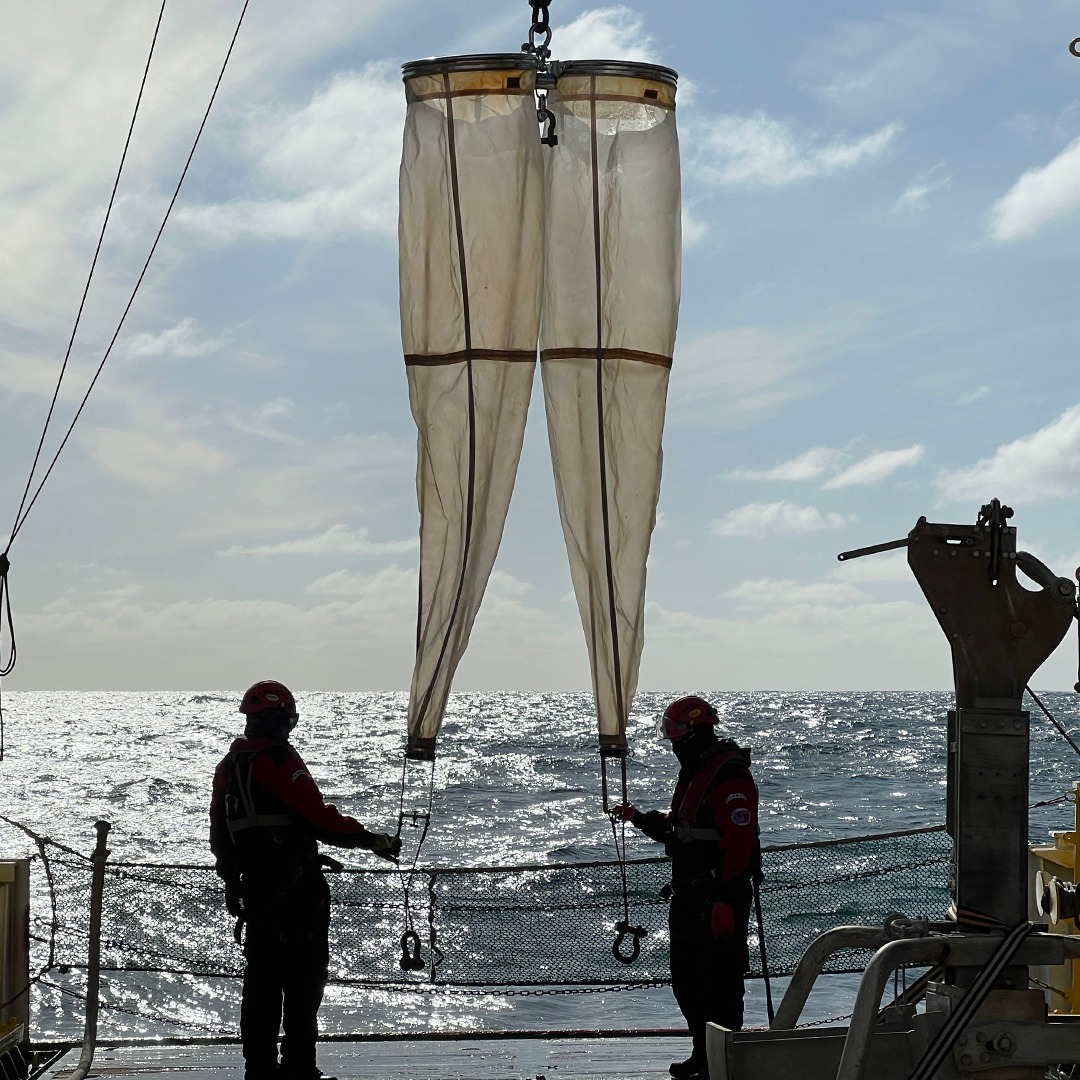
The largest bongo net onboard is a combination of 330 and 500 𝜇m nets. Photo by Jenn Magnusson.
To collect larger fauna, like krill and silverfish, a different type of net called a frame trawl net (FTN) is used. This net has a large metal opening and is towed behind the ship at low speed in order to cover more area and concentrate the sample. These are usually deployed just before or after we leave the station (based on acoustic data) since we have to be moving. For even larger samples, a MOCNESS (Multiple Opening/Closing Net and Environmental Sensing System) is used. You can read more about MOCNESS sampling in this information page from Woods Hole Oceanographic Institute.
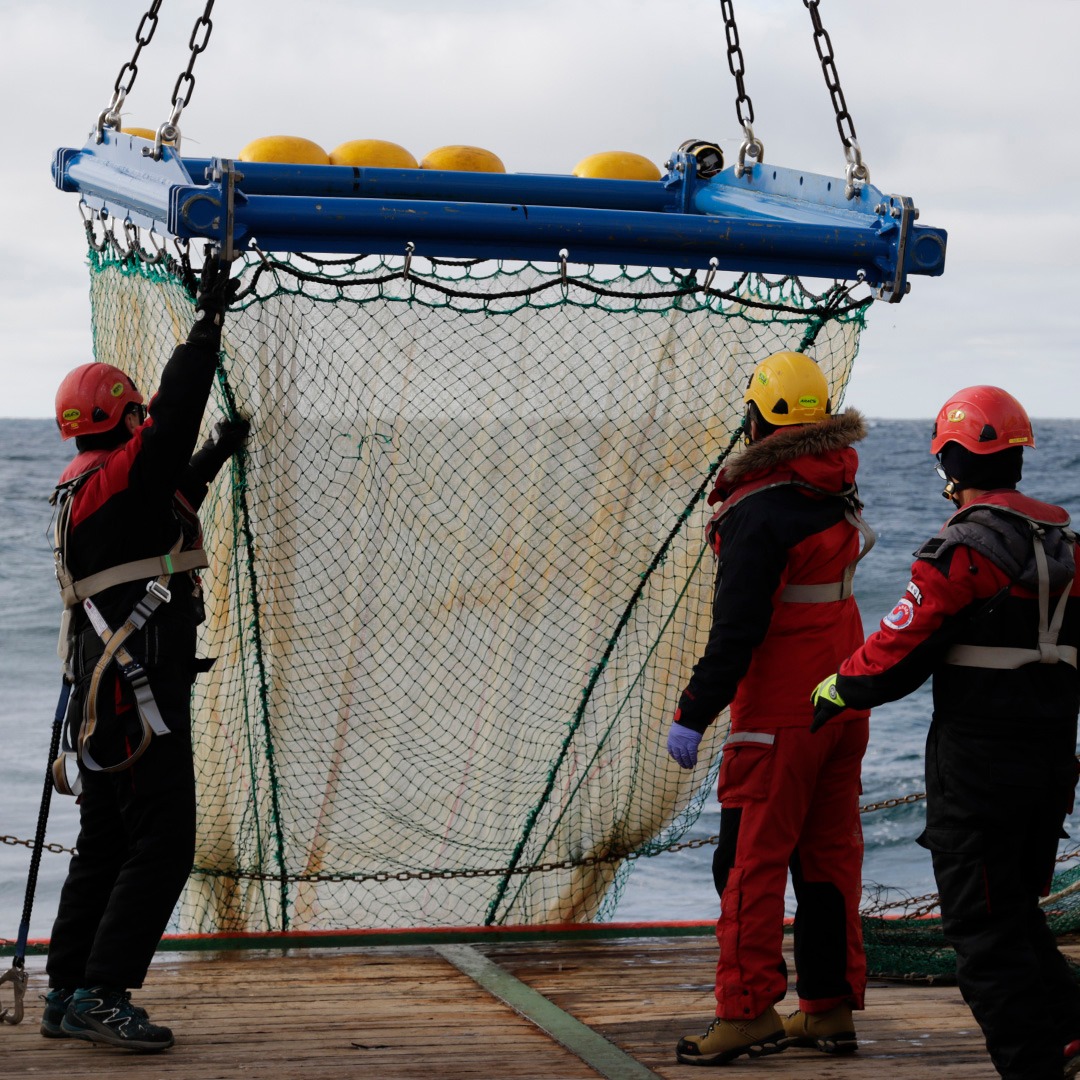
Recovering the Frame Trawl Net. Photo by Jenn Magnusson
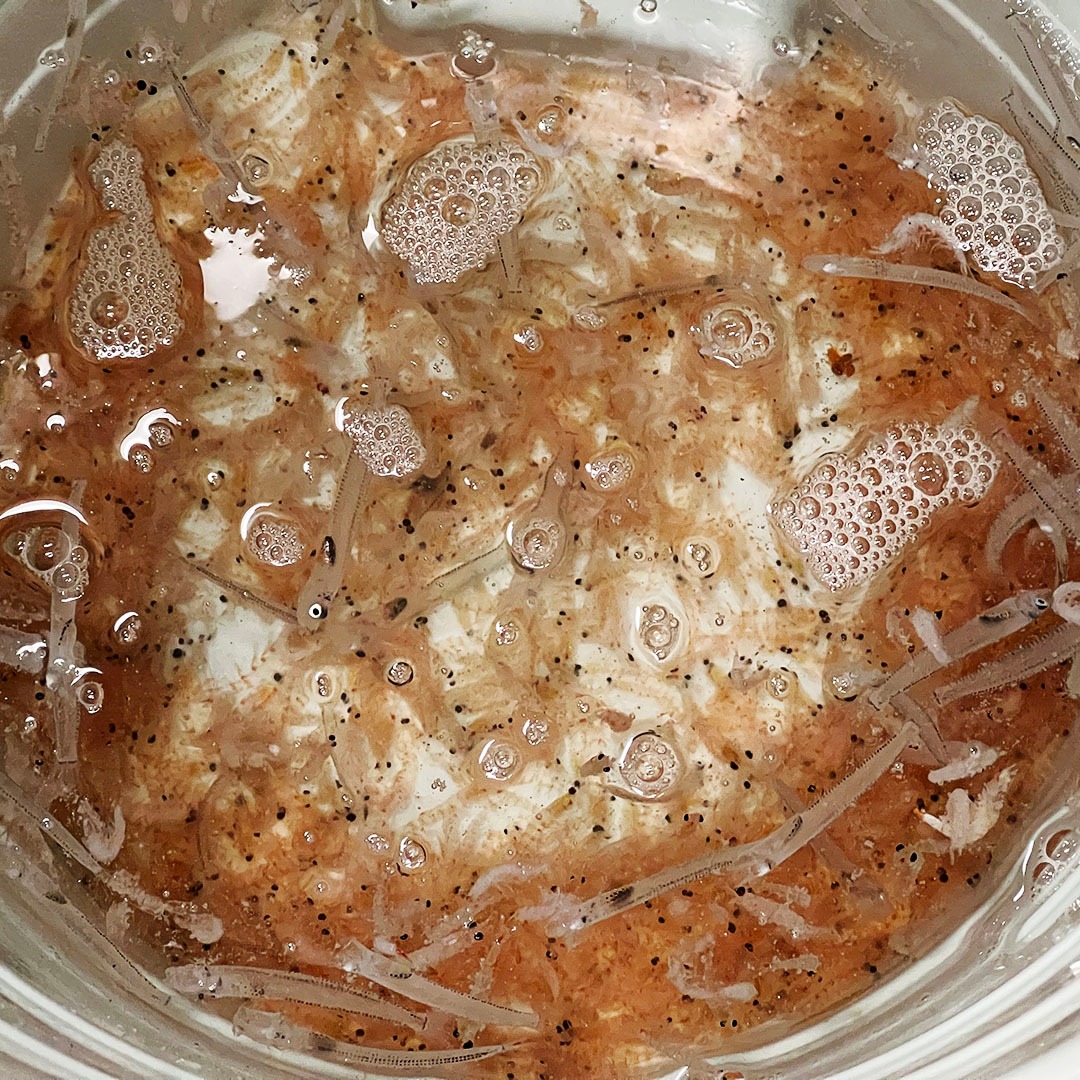
Krill and silverfish captured with the Frame Trawl Net. Photo by Jenn Magnusson
Geological Oceanography
At a few stations, we have a taken a sample of the seafloor using a box core. This is a heavy metal contraption that pushes an open-ended box into the soft seafloor and then traps the sediment inside and brings it back to the surface. Cores are then taken from the box sample and prepared for study in the lab. Scientists use the cores to study both the geology of the seafloor sediments and the food web within.
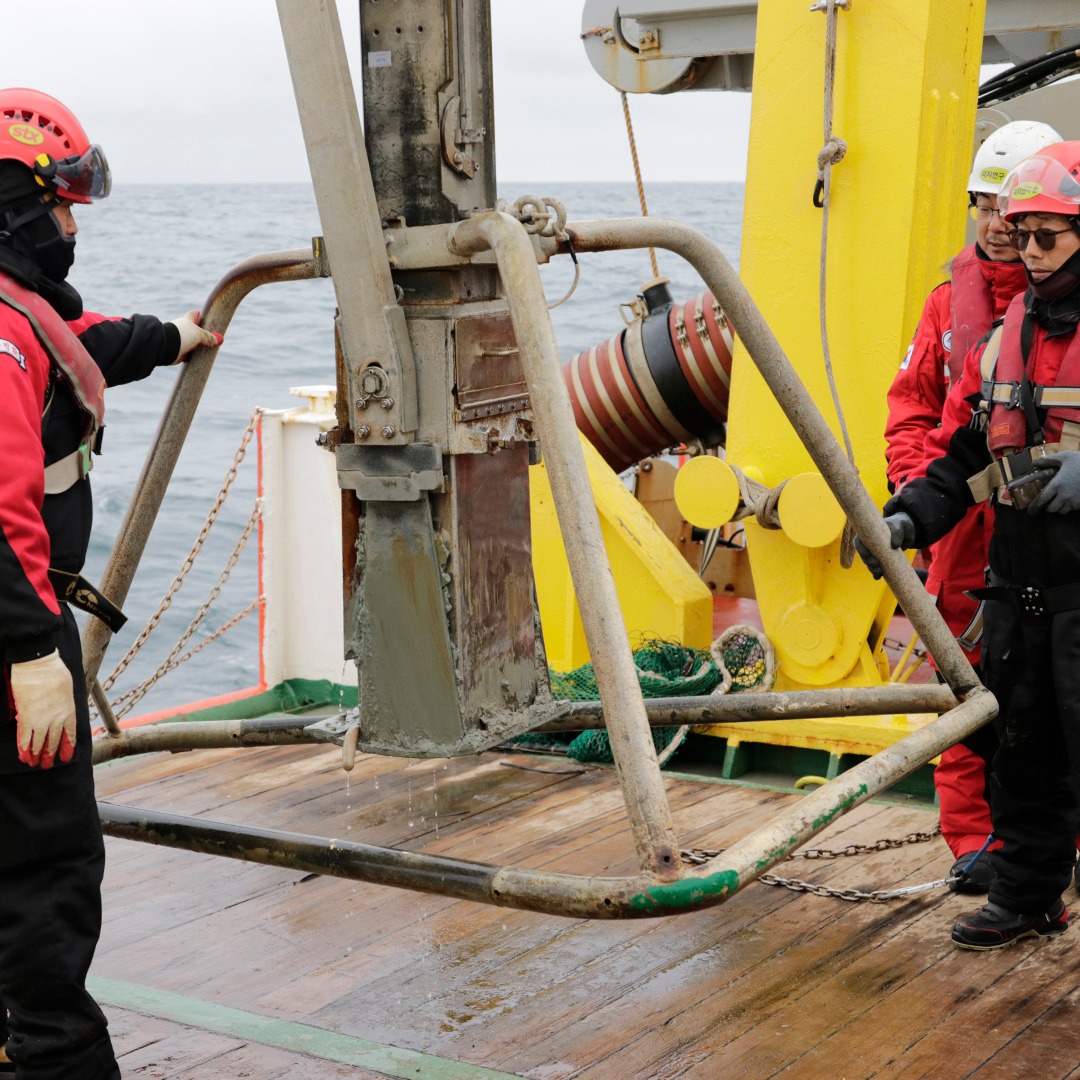
Bringing the box core back on deck with the sediment inside. Photo by Jenn Magnusson
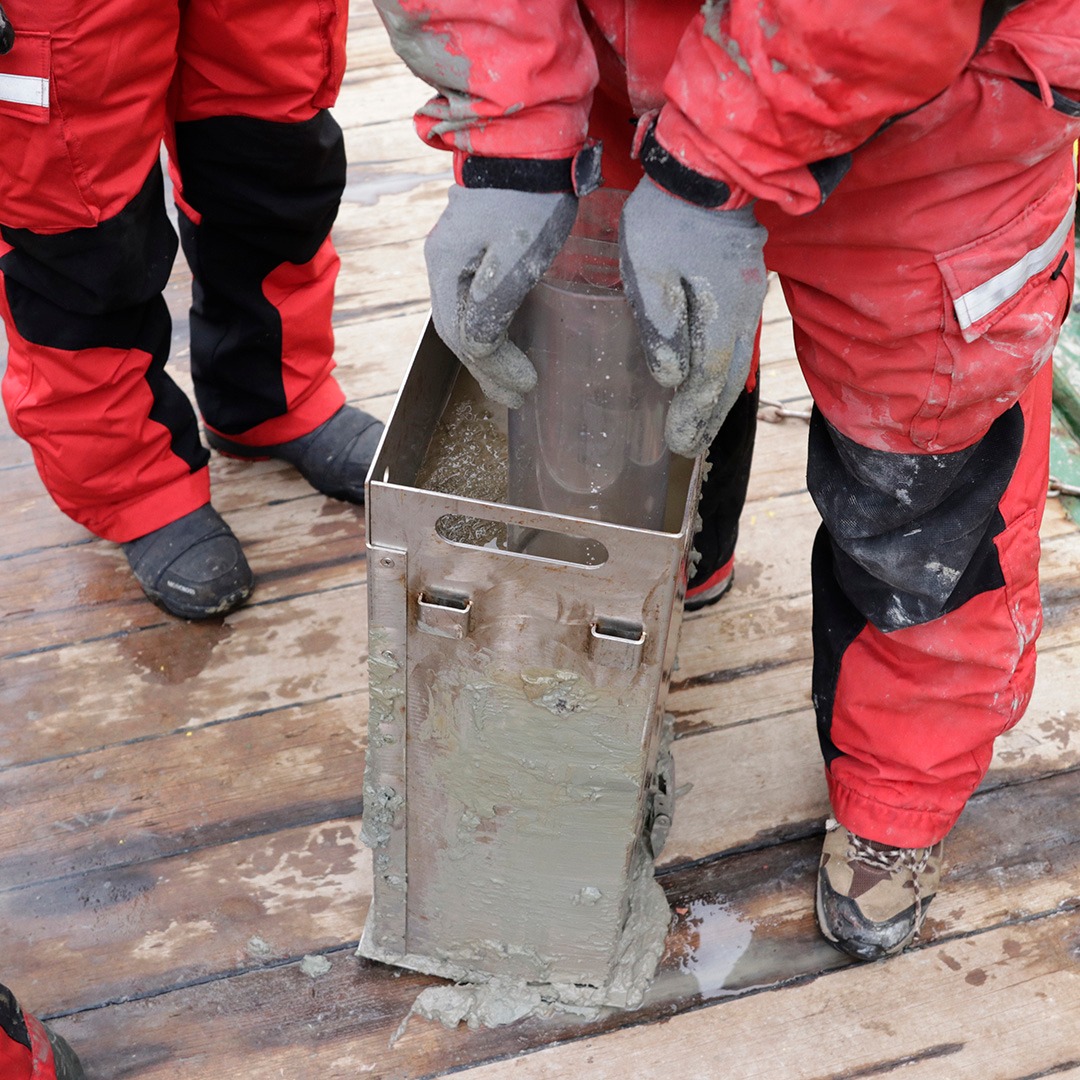
Taking a push core from the box core sample. Photo by Jenn Magnusson
My Turn
Once all of the above sampling has taken place and we are ready to leave the station, it is finally my turn to deploy the float (if we are deploying a float at that station) and wave goodbye as we sail away toward the next station and get ready to do it all again.
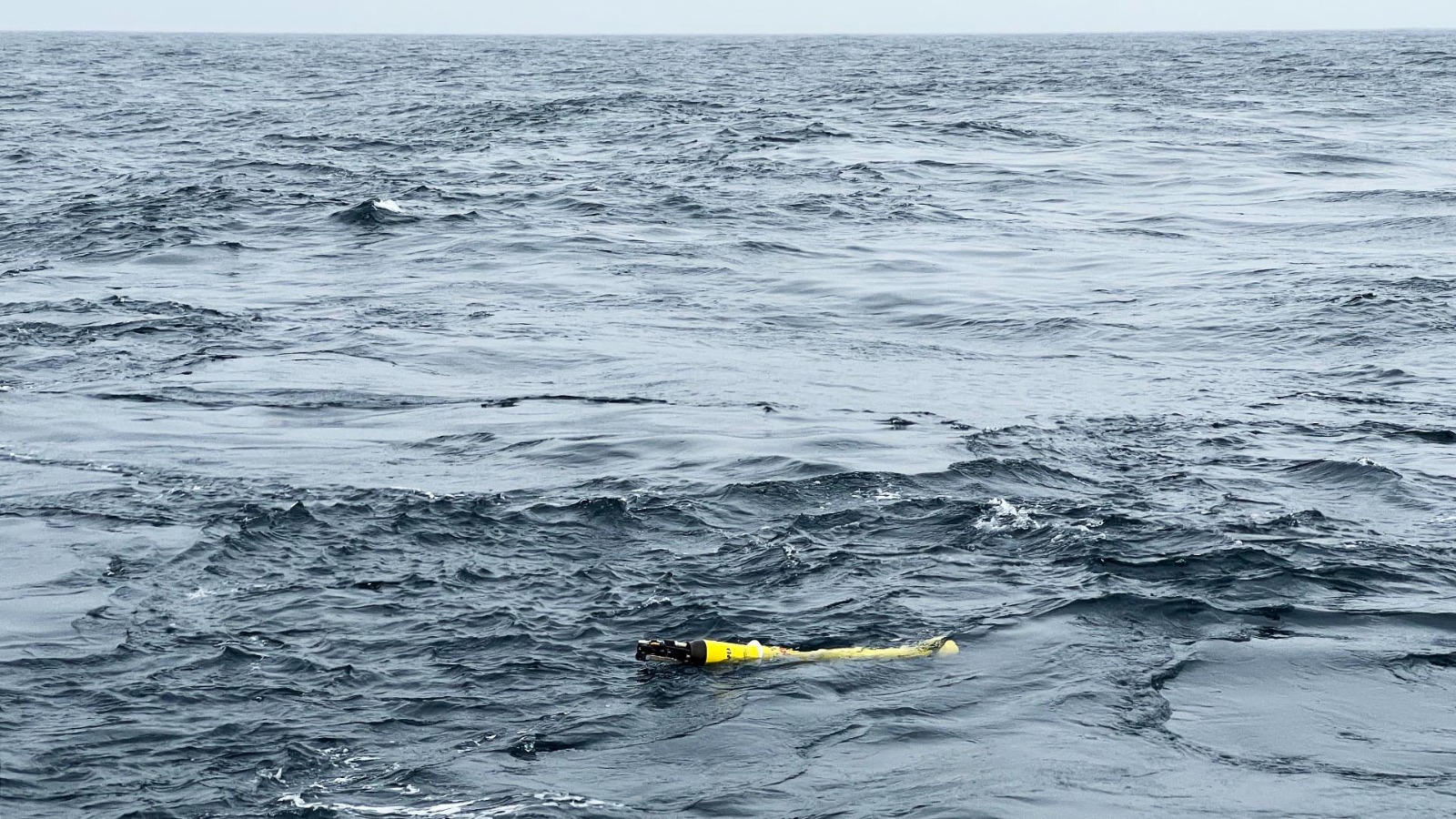
Goodbye little float! Good luck with your profiles! Photo by Jenn Magnusson.
